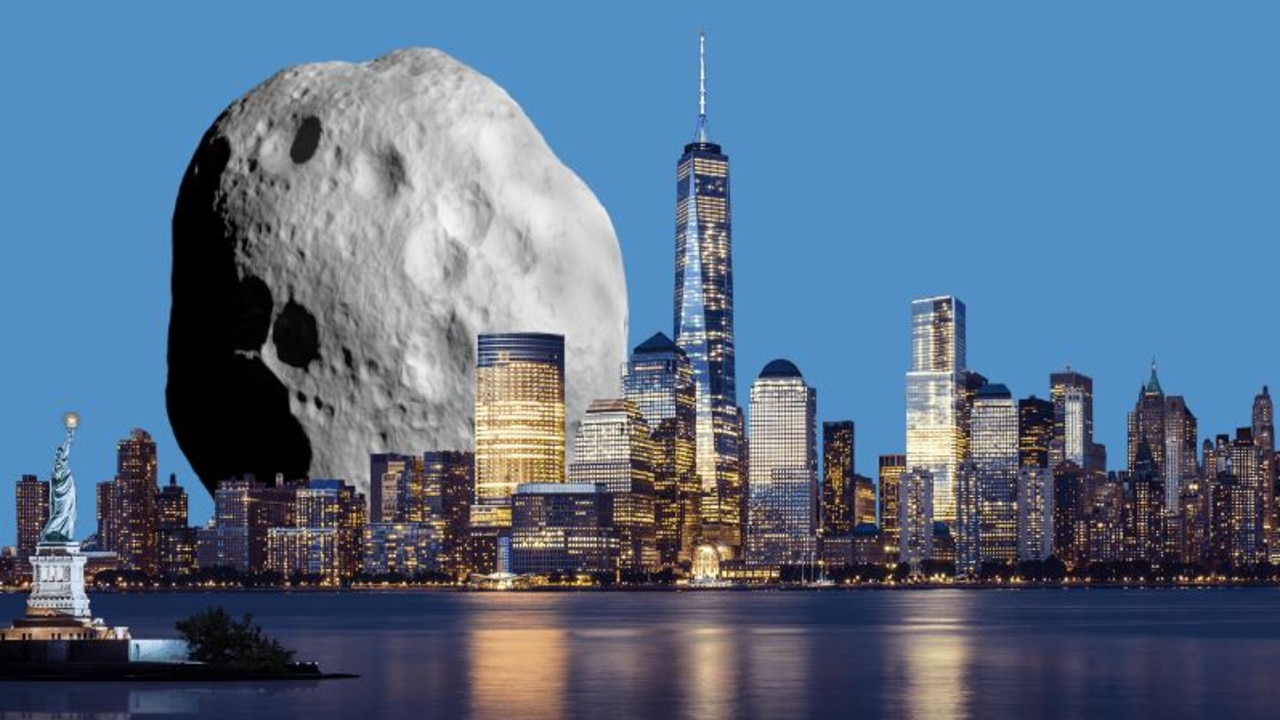Asteroid almost as wide as world’s largest building flying past Earth
A massive asteroid almost the size of the world’s tallest building will fly past Earth, with NASA considering it “potentially dangerous” due to how close it will come.
A massive asteroid – almost as large as the world’s tallest building – will fly past Earth and be visible on telescopes in Aussie backyards.
NASA has classified Asteroid 2022 RM4 as “potentially hazardous” due to its predicted path close to the planet.
The asteroid is about 750m in diameter, just short of the Burj Khalifa in Dubai – the world’s largest building – which stands at 828m.
It is expected to pass Earth on Tuesday, coming roughly 2.3 million kilometres from our planet at about 23,470km/s.
That’s the equivalent of six times the distance the Moon is from Earth.

But Aussies will need to wait about 14 hours to get a glimpse on their own telescopes.
Astrophysicist Dr Brad Tucker said the size of 2022 RM4 meant it was one to monitor due to its size and estimated proximity.
But he clarified it was considered relatively “small” in the scale of larger asteroids tracked by authorities.
“It’s just as you may keep track of a distant storm, so that when it passes by in another 10 or 20 years, it doesn’t get too close,” Dr Tucker, a fellow at the ANU Research School of Astronomy and Astrophysics, told NCA NewsWire.

NASA maintains a close database of the orbits of known near-Earth objects, with only a small fraction posing as “potentially hazardous asteroids”.
“These objects are defined as asteroids that are more than about 460 feet (140 metres) in size with orbits that bring them as close as within 4.6 million miles (7.5 million km) of Earth’s orbit around the Sun,” NASA’s website states.
“No one should be overly concerned about an Earth impact of an asteroid or comet.
No danger, but newly-discovered asteroid 2022 RM4 will pass less than 6 lunar distances on November 1. Possibly as wide as 740 meters, it will brighten to mag 14.3, well within reach of backyard telescopes. @unistellar
— Tony Dunn (@tony873004) October 5, 2022
This is very close for an asteroid this size. #2022RM4pic.twitter.com/Z8khblg3Gq
“The threat to any one person from auto accidents, disease, other natural disasters and a variety of other problems is much higher than the threat from NEOs.”




